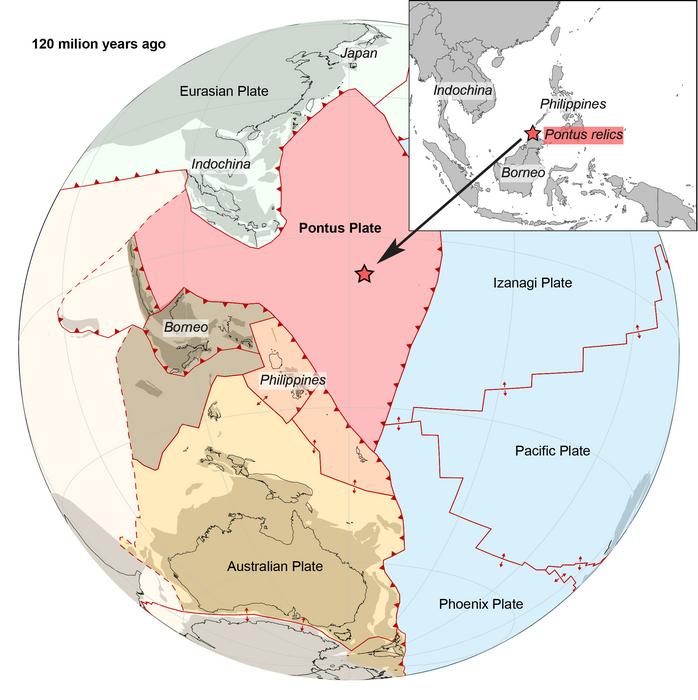A geology PhD student at Utrecht University has reconstructed an ancient and previously unknown tectonic plate, thought to once have been a quarter of the size of the Pacific Ocean.
As tectonic plates move, large ancient oceanic plates can fall underneath other plates, known as “subduction“. Though largely hidden from the surface, these ancient subducted plates can leave fragments in undersea mountain ranges, where tectonic plates shift apart and molten rock erupts up to the surface to form a ridge.
Suzanna van de Lagemaat studied the area around the Philippines, where such eruptions have happened. “The Philippines is located at a complex junction of different plate systems,” van de Lagemaat explained in a statement. “The region almost entirely consists of oceanic crust, but some pieces are raised above sea level, and show rocks of very different ages.”
Reconstructing plate movements between Japan and New Zealand using geological data, she found that the ancient plate that was once there would have been gigantic before it disappeared. Eleven years ago, a team looking at seismic data in the area found signal disruptions, which can occur as seismic waves pass through submerged tectonic plates, and identified an ancient subduction zone. Studying samples collected in Borneo, van de Lagemaat and team realized they weren’t part of a known plate.
“We thought we were dealing with relics of a lost plate that we already knew about. But our magnetic lab research on those rocks indicated that our finds were originally from much farther north, and had to be remnants of a different, previously unknown plate,” van de Lagemaat explained.
The Pontus oceanic plate reconstructed to show its location in the Pacific Ocean 120 million years ago.
Image credit: Suzanna van de Lagemaat, Utrecht University
The research proposes that the plate stretched from southern Japan to New Zealand for at least 150 million years, with the remains of the plate – now named Pontus – also located on Palawan island in the Western Philippines, and the South China Sea. The team was surprised to discover that they had already had samples.
“Eleven years ago, we thought that the remnants of Pontus might lie in northern Japan, but we’d since refuted that theory,” Douwe van Hinsbergen, Van de Lagemaat’s PhD supervisor, said. “It was only after Suzanna had systematically reconstructed half of the ‘Ring of Fire’ mountain belts from Japan, through New Guinea, to New Zealand that the proposed Pontus plate revealed itself, and it included the rocks we studied on Borneo.”
The study is published in Gondwana Research.
Source Link: Geologists Surprised To Find Remains Of An Ancient Unknown Mega-Plate
